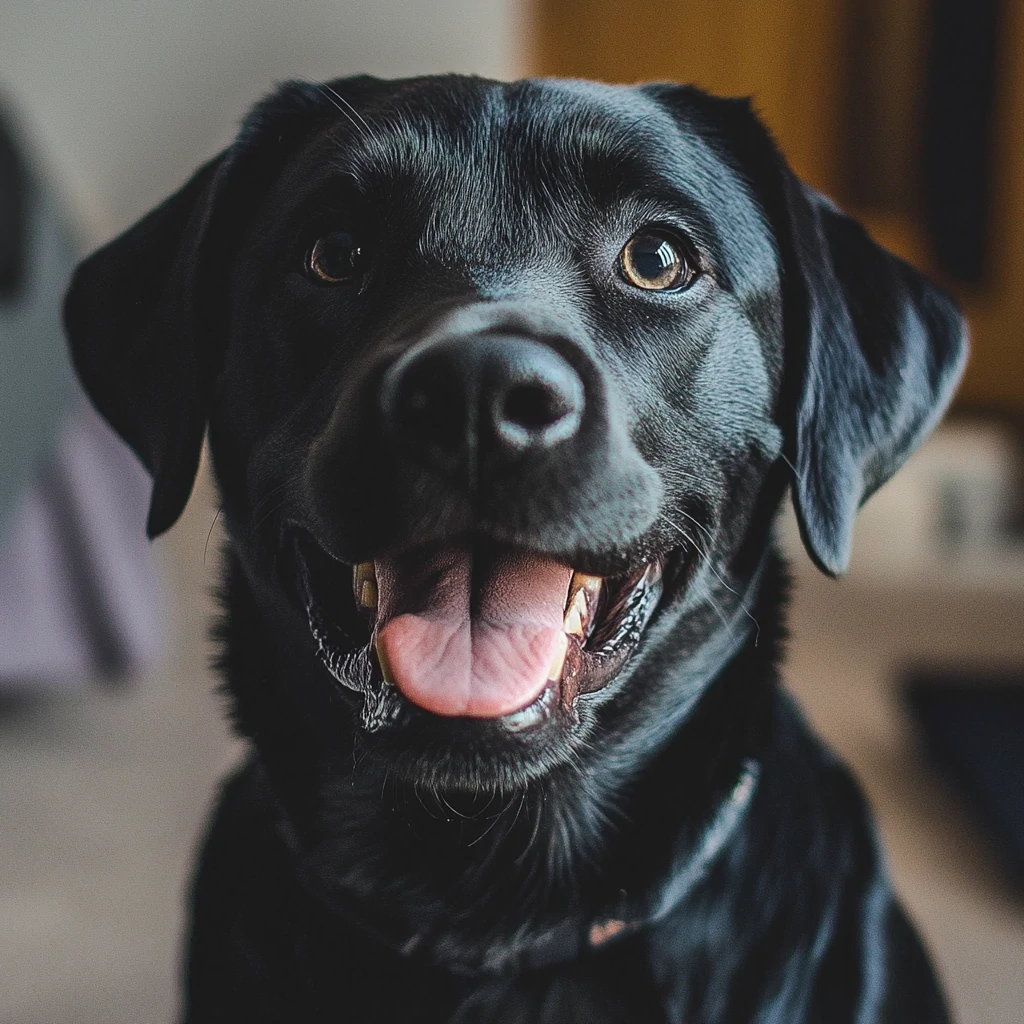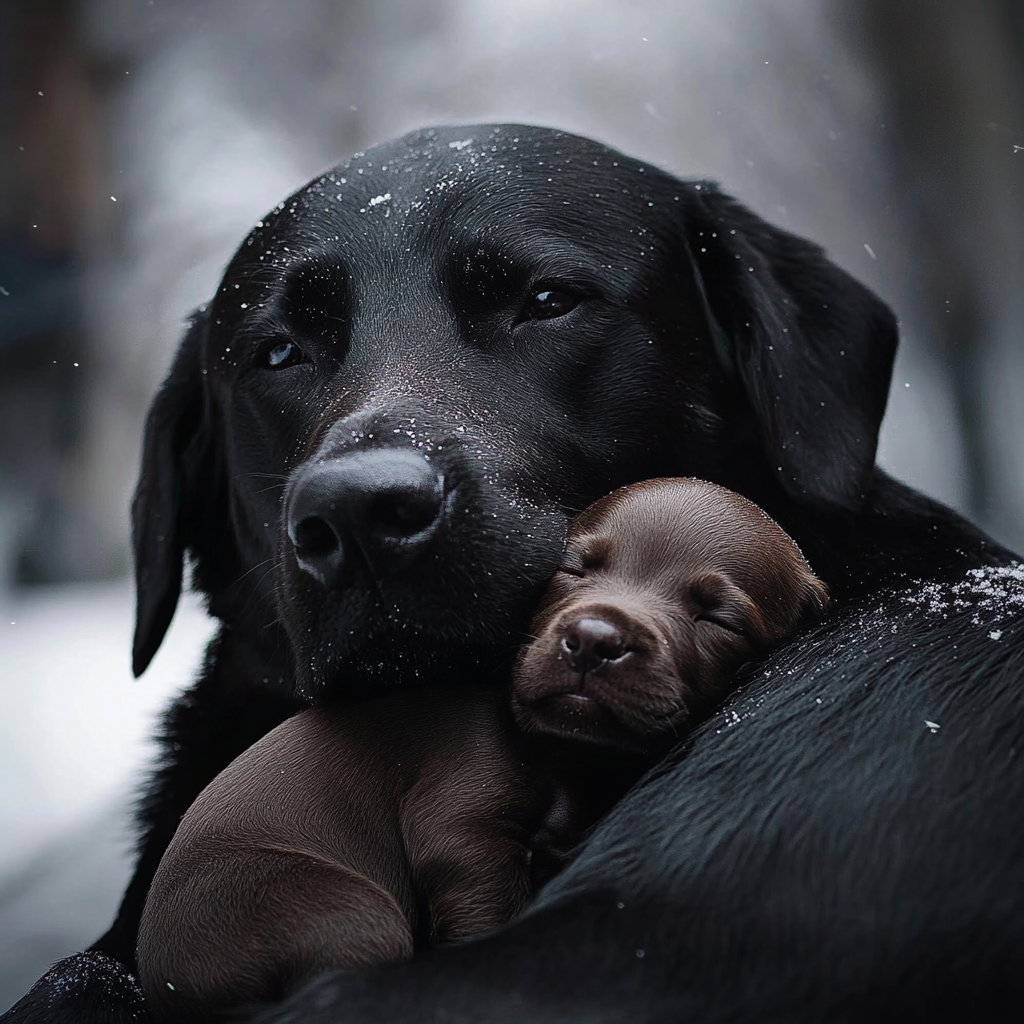Life can be unpredictable, and change often strikes when we least expect it. This was especially true for Max, a once pampered house dog who found himself navigating the unpredictable world of the streets. Max’s story is not just one of survival but a powerful testament to the resilience of animals and the bonds they form in a world where nothing stays the same.
Max’s Early Life: A Cozy Home and Endless Comforts
Max lived the perfect dog’s life—or so it seemed. His loving owner adored him and treated him like royalty. Max enjoyed the luxuries that every dog dreams of: a warm bed, gourmet meals, and endless belly rubs. He never had to worry about where his next meal would come from or whether he had a safe place to sleep.
Max’s days were filled with gentle walks through the neighborhood, sniffing flowers, and chasing his favorite ball in the park. His owner was his world, and life was perfect in its simplicity. The outside world, beyond his fenced yard, was something Max never paid much attention to. He had everything he needed at home.
But life has a way of shaking things up, and for Max, this idyllic existence came to an abrupt halt.

A Sudden Change: Loss and the Streets
When Max’s owner passed away, everything changed. The home that was once filled with love and warmth became cold and empty. Max didn’t understand what had happened. He waited by the door for his owner to return, but the days passed, and no one came. Eventually, strangers arrived and took Max out of the only home he’d ever known.
Suddenly, Max was thrust into a world he wasn’t prepared for. He was left to fend for himself on the streets. The once-pampered dog now had to confront the reality of survival.
Fear and Uncertainty: The Harsh Reality of Street Life
Max’s first days on the street were filled with fear. Every sound startled him—the honking cars, the distant rumble of construction, the loud chatter of people passing by. He no longer had the safety of his home, and he was constantly on edge.
Hunger soon became an issue. Max had never needed to scavenge for food, and the idea of finding something to eat on his own was daunting. His soft bed was replaced by cold pavement, and the belly rubs he once took for granted were now a distant memory.
The world Max found himself in was harsh and unforgiving. Other strays roamed the streets, and not all were friendly. Max had to quickly learn how to defend himself, how to navigate the crowded streets, and how to avoid danger. Despite his fear, he knew one thing: he had to survive.

Adapting to a New Life: Learning to Survive
As the days turned into weeks, Max began to adapt to his new surroundings. The fear that had gripped him initially slowly gave way to determination. He was no longer the pampered house dog; he was a survivor.
Max learned to scavenge for food, digging through trash bins and finding scraps wherever he could. He figured out where to find shelter when it rained, huddling under awnings or in quiet alleyways. Though it wasn’t easy, Max’s instincts kicked in, and he began to understand how to navigate this new world.
The streets, once overwhelming and chaotic, became more familiar. Max began to notice patterns—the times when people threw away food, the safe spots where he could rest without being disturbed, and the places to avoid. Slowly but surely, Max found his rhythm.
New Friends: The Importance of Companionship
Max was not alone for long. As he roamed the neighborhood, he encountered other strays, dogs who had been living on the streets for much longer than he had. These dogs had formed a loose pack, watching out for one another and sharing whatever food they could find.
At first, Max was hesitant. He had always been a solo dog, reliant on his owner for companionship. But the pack welcomed him, and he quickly realized the value of having others by his side. Together, they protected each other from larger threats, shared food when it was scarce, and huddled together for warmth on colder nights.
The pack became Max’s new family. While he never forgot the love and comfort of his old life, he found a new sense of belonging with his fellow strays. They understood the struggles of street life, and together, they made the harsh environment a little more bearable.
Discovering the Simple Pleasures of Freedom
As time passed, Max began to appreciate the small joys that came with his newfound freedom. There was something exhilarating about running through the streets with no leash, chasing after squirrels, and exploring new areas. The world, though dangerous, was also full of exciting scents and adventures.
Max realized that, for the first time in his life, he was truly free. There were no walls or fences confining him, no set schedules or rules to follow. He could go wherever he pleased, and each day brought new experiences.
The other dogs in the pack became his playmates, and together, they roamed the city, exploring hidden corners and chasing after whatever caught their eye. Max’s days were no longer spent waiting by the door for his owner to return; they were filled with exploration and discovery.
Finding Strength and Confidence
Max’s journey from house dog to street survivor wasn’t easy, but it made him stronger. The dog who had once been terrified of the outside world had grown into a confident, resilient animal. He no longer flinched at the sound of honking cars or ran from other dogs. Instead, he faced each day with courage and determination.
Max had learned how to fend for himself, how to find food, and how to stay safe. But more than that, he had discovered his own inner strength. He no longer relied on others to take care of him—he had become his own protector.
Though Max missed the comforts of his old life, he found peace in his new one. He had formed bonds with the other strays, and together, they had created a sense of community. The streets were no longer a place of fear and uncertainty; they were his home.
A New Chapter: Thriving in His New World
Max’s journey is a reminder that even in the face of hardship, there is always room for growth and adaptation. Though he had started as a house dog, pampered and dependent on his owner, he had transformed into a street survivor, confident and resilient.
Max never forgot his beloved owner or the comfort of his old life. But he learned to embrace the simple pleasures of his new existence—the freedom to explore, the companionship of his fellow strays, and the strength that came from overcoming challenges.
Max’s story is one of survival, but it’s also a story of hope. It shows that even when life takes an unexpected turn, it’s possible to adapt, grow, and find new sources of happiness. Max had not just survived; he had thrived.

Frequently Asked Questions (FAQ)
1. Can house dogs survive on the streets?
Yes, house dogs can survive on the streets, though it can be challenging. They must learn to adapt to their new environment, find food, and protect themselves. Dogs have strong survival instincts, and with time, they can adjust to street life, as seen in Max’s story.
2. What are the biggest challenges for dogs living on the streets?
The biggest challenges for street dogs include finding food, avoiding danger from other animals or humans, and staying healthy in harsh weather conditions. Without regular care, they are also at risk of diseases, injuries, and malnutrition.
3. How do street dogs form packs?
Street dogs often form packs for survival. These packs provide safety in numbers, making it easier to find food and protect against threats. Dogs in packs also form strong bonds, which help them cope with the difficulties of street life.
4. Can a stray dog return to living in a home?
Yes, stray dogs can return to living in a home, though it may take time for them to adjust to a domestic environment again. With patience, training, and care, a stray can adapt to a new life indoors, especially if given love and stability.
5. What can be done to help stray dogs?
There are many ways to help stray dogs, such as providing food, shelter, and medical care. Supporting local animal rescue organizations or adopting a stray are also great ways to give these dogs a better chance at life.

Max’s transformation from a house dog to a street survivor shows the resilience and adaptability of dogs. Though life on the streets was not what Max had expected, he found a way to not only survive but thrive. His journey reminds us that even in the face of adversity, there is always hope for a brighter future.

You might also like
Uncategorized
Honey Roasted Carrots with Garlic, Lemon, and Thyme: A Perfectly Sweet and Savory Side Dish
Uncategorized
Crispy Homemade French Fries Recipe — Golden, Crunchy, and Irresistible!
Uncategorized
Homemade Goldfish Crackers: A Fun and Cheesy Snack You’ll Love